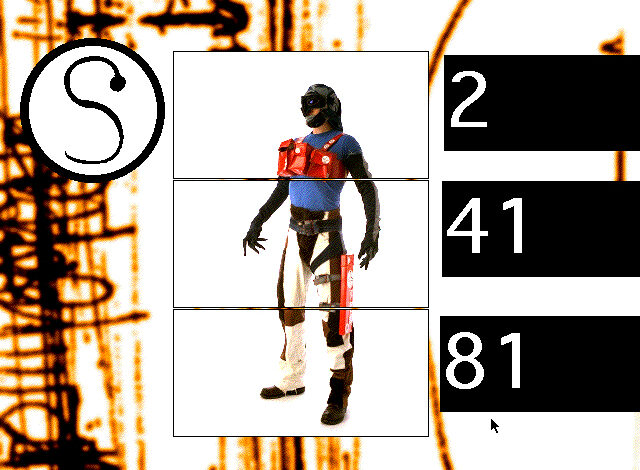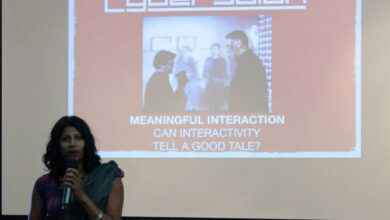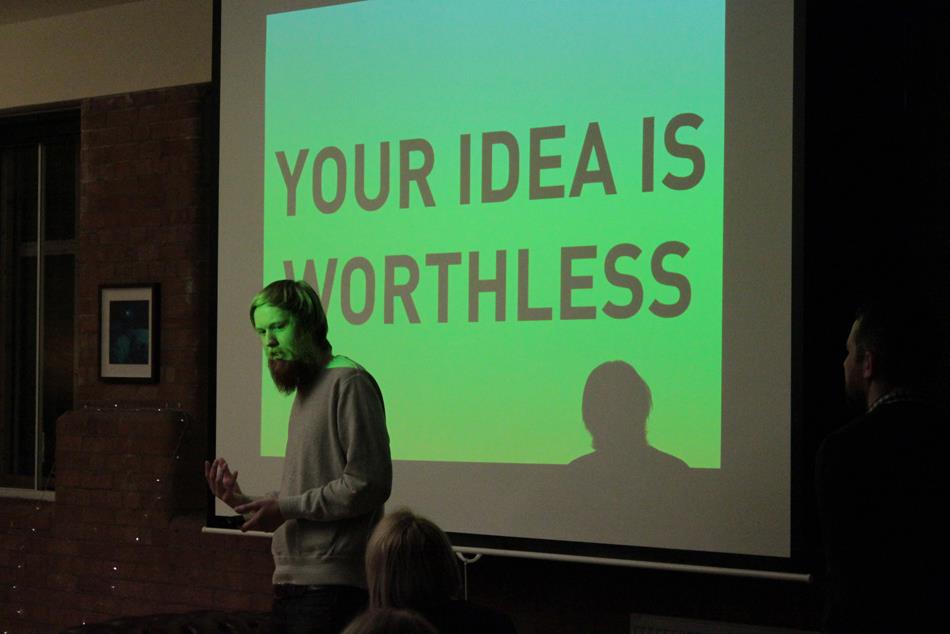
Reading for Meaningful Interaction
From Antirom to the Rumpus Room and Poke agencies- background reading for our event on Meaningful Interaction
Sleeping with the enemy, can interactivity and stories get along?
How do brands create meaning in an interactive world?
How can multiple authors create a compelling story?
Nik and Tom Roope, leaders in interactive stories, will look back at their digital footprint over the last 20 years from Antirom and Tomato Interactive to Poke and the Rumpus Room.
They’ll also share their insights on what consumers are really looking for through digital media, and how best to give it to them.
Can interactivity tell a good tale? How do we tell online stories that speak to the human condition?
“I’ve always said every time we try and combine games and stories to make something new – an adventure game or interactive cinema – it doesn’t work. But I’ve secretly hoped to be proven wrong…”
– Andy Cameron
(Co-founder of Antirom and Cybersalon; Creative Director of Benetton’s Fabrica Lab and Weiden + Kennedy)
In 1994 Antirom was one of the first creative collectives to treat interactivity as a medium in its own right, rather than simply a way to access content. Antirom also blurred the line between artist and commercial agency.
Come along for a lively debate on the future of story-telling!
The narrative is dead! Long live the narrative!
Speakers
Tom Roope- Co-founder Antirom/ co-founder and Creative Director, The Rumpus Room
The Rumpus Room was founded in 2007 to harness the power of people building experiences together and align this activity with brand communication. Tom’s work at The Rumpus Room has been integral in the company being recognised with some of the highest accolades, by award bodies including D&AD, Cannes, One Show, Brit Insurance Design of the Year and Campaign Media Awards.
In 2012 Tom was one of the first 30 British inductees into the Bima Digital Hall of Fame as well as presented the award of Honorary Royal Designer for Industry by the Royal Society of Arts, in recognition of his “innovative work in taking computer interactions beyond the desktop and into communities and shared spaces” – Matthew Taylor, Chief Executive of the RSA.
Nik Roope– Co-founder Antirom/ co-founder and Creative Director, Poke
Nicolas is an artist, and one of his materials of choice is interactive media and the communities and businesses that drive it. A lot of this interest is expressed through Poke, a vibrant, rigorous creative company that believes in the power of creativity as a force for unlocking and creating value. Poke are highly acclaimed by creative peers in the field and also by long standing clients who repeatedly witness the results of their deep, honest approach.
Nicolas was included in The Wired 100 and Adage Creative 50 lists in 2011 and inducted into the BIMA Digital Hall of Fame in 2012.
Chair: Niki Gomez (co-founder Cybersalon)
Niki is an independent digital strategist and an MIT graduate. Andy Cameron and the members of Antirom were her inspiration to enter the field of digital media, discovering them whilst working at the Cybertheatre, an early experimental Net cafe in Brussels. She works between London and Mumbai.
The future of entertainment? I’m still waiting
by Andy Cameron
Once upon a time I wrote an earnest article about how games and stories could never be mixed. It seemed to me then, and it still seems to me now, that every time we try and combine games and stories to make something new – an adventure game or interactive cinema or whatever we decide to call it – it doesn’t work. We end up with a hybrid monster, neither fish nor fowl. We end up with a chimera.
And yet, deep down, I’ve secretly hoped to be proven wrong. The dream of combining the best bits of storytelling with the best bits of gameplay is a beguiling one… more
The Antirom collective was formed in 1994 by a group of Londoners as a protest against “ill-conceived point-and-click 3D interfaces” grafted onto re-purposed old content – video, text, images, audio and so on – and repackaged as multimedia. The members of Antirom felt they could do better than this multi-mediocrity, or at least no worse.
The idea was to explore interactivity and try to understand what made an interactive experience engaging a simple question but one that proved difficult to resolve. Inspired by Gerald Van Der Kaap’s BlindRom, Antirom’s eponymous first CD-ROM was a collection of small interactive pieces that were playful, fun, often silly and usually explored only one interactive idea at a time… more
The Antirom Founding Statement, Feb 1995
Artists’ statement
Anti-rom was intended as a critique of the poverty of contemporary multimedia. In particular it was intended as a critique of those CD-ROMs which fail to go beyond traditional linear form – the kind of CD-ROM where shiny 3D buttons are grafted over packets of pointless information – the automatic vending machine type of CD-ROM where you can press a button and have whatever you want, as long as its Coke or Fanta (and there’s no Fanta).more.
Tom Roope talks about those Antirom Days
In the Beginning there was Antirom

The Antirom RGB, an interactive music stage performance of Antirom’s experimental interactive music work. RGB played at The ICA, London and in Sao Paolo, San Francisco, Copenhagen, Montreal, Brussels and Sydney.
Nik Roope talks about Things versus Ads
Work by The Rumpus Room: a user generated experience for the launch of the new Google Chromebook
Work by Poke: Make Hackney Sparkle! (using your mobile phone)
Helping EE to bring the community together at Christmas while showcasing the brand’s full breadth of tech wizardry.
Colors Magazine- The Food Issue by Andy Cameron
If you’re feeling intellectual read:
Dissimulations, an essay by Andy Cameron
The Illusion of Interactivity
Interactivity refers to the possibility of an audience actively participating in the control of an artwork or representation. Until now, what we call culture has not allowed for a great deal of interaction from the audience. The audience is given a space for interpretation and a space for reaction, but not for interaction. There are those who argue that interpretation is interaction, and so of course it is, but not in the sense intended here. For the purposes of this discussion, interactivity means the ability to intervene in a meaningful way within the representation itself, not to read it differently. Thus interactivity in music would mean the ability to change the sound, interactivity in painting to change colours, or make marks, interactivity in film the the ability to change the way the movie comes out and so on. In its most fully realised form, that of the simulation, interactivity allows narrative situations to be described in potentia and then set into motion – a process whereby model building supercedes storytelling, and the what-if engine replaces narrative sequence…more
Other People Looking at Digital Storytelling
MIT Media Lab’s Center for Future Storytelling
At the Center for Future Storytelling, researchers envision how technology can give people more control over TV programs they encounter and stories they follow- A conversation with V. Michael Bove, Jr….more
D&AD: Inspired by Storytelling
Storytelling has been around as long as the human race. Gather round as we explore some of the great storytellers and stories of the modern communications world and uncover some of the secrets of the craft for you. Once upon a time…more
Future of Storytelling Conference, NYC, Oct 3rd 2013
Charlie Melcher (organiser) talked about the importance of the white space between words — a convention that was lost during the Middle Ages. “You couldn’t really think about what you were reading when you were decoding those words,” he says in the video. “But with the invention of white spaces, people could read quickly, and silently, and with that they could start to have thought. And so I had this epiphany: Maybe that’s exactly where we are right now. We’re in the early stage of our digital literacy where we’re still kind of struggling, and we haven’t figured out the metaphorical white spaces of the digital age.” …more





